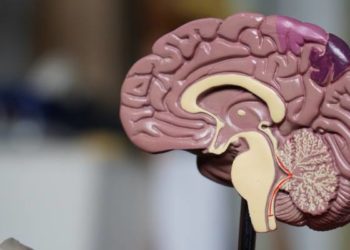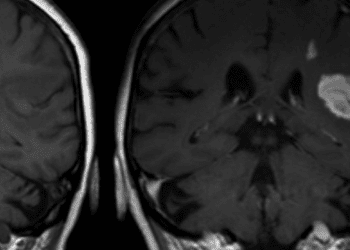Pharmacomechanical thrombolysis does not lower risk of post-thrombotic syndrome: The ATTRACT trial
1. Patients with proximal deep venous thrombosis (DVT) experience similar rates of post-thrombotic syndrome (PTS) when treated with pharmacomechanical catheter-directed thrombolysis (PCDT) plus anticoagulation versus anticoagulation alone.
2. Although treatment with PCDT and anticoagulation was associated with reduced severity of PTS compared to anticoagulation alone, no significant difference in quality of life was detected between the treatment groups.
Evidence Rating Level: 1 (Excellent)
Study Rundown: Anticoagulation prevents thrombus extension in patients with DVT though it does not dissolve the original thrombus. PTS, consisting of leg swelling and chronic pain, occurs as a complication of DVT in a substantial number of patients. A recent randomized trial (CaVenT trial) demonstrated a reduction in PTS when catheter-directed thrombolysis (CDT) was added to anticoagulation for proximal DVTs. The Acute Venous Thrombosis: Thrombus Removal with Adjunctive Catheter-Directed Thrombolysis (ATTRACT) trial was developed to assess whether PCDT, consisting of local fibrinolytic delivery and thrombus destabilization, reduced PTS in patients with a proximal DVT. The primary outcome, development of PTS between 6 and 24 months following treatment, was not significantly different in individuals treated with PCDT versus anticoagulation alone. Key secondary outcomes demonstrated no significant difference in quality of life measures between the two groups (despite a reduction in PTS severity with PCDT) and a higher risk of major bleeding in the PCDT group. This trial demonstrates little clinical benefit with the addition of PCDT in the treatment of proximal DVT.
This randomized, multicenter, blinded trial was larger and more generalizable than previous studies assessing the role of CDT for DVT management. Important limitations included a significant number of missed follow-up assessments for PTS and limited power to analyze treatment effects within subgroups. Follow-up to 2 years after randomization may also be a limitation, as the significance of CDT versus anticoagulation alone in the CaVenT trial increased at 5 years compared to 2 years.
Click to read the study in NEJM
In-Depth [randomized controlled trial]: This phase 3, multicenter, assessor-blinded trial enrolling patients between 2009 and 2014 randomized 692 adult patients with symptomatic proximal DVT (femoral, common femoral, or iliac vein) and without significant bleeding risks to PCDT plus anticoagulation (n = 336) or anticoagulation alone (n = 355). PCDT was performed through initial delivery of recombinant tissue plasminogen activator (rt-PA) followed by either balloon maceration, catheter aspiration, thrombectomy, percutaneous transluminal balloon venoplasty, stent placement, or a combination. The primary outcome, development of PTS between 6 and 24 months after treatment, was defined using a Villalta score of ³5 or presence of a leg ulcer between 6- and 24-month follow-up. Severity of PTS was assessed using the Villalta scale. Quality of life scores were reported using standardized questionnaires. Patients were assessed following randomization at days 10 and 30, and months 6, 12, 18, and 24.
Thrombolysis was performed a median 1 day after randomization and mean degree of thrombus removal was 76%. PTS developed in 47% of patients (157/336) in the PCDT group and 48% (171/355) in the control group within 24-months (risk ratio [RR], 0.96; 95% confidence interval [CI], 0.82 to 1.11; p = 0.56). Moderate-to-severe PTS (Villalta score ³10) occurred in 18% of patients in the PCDT group versus 24% in the control group (RR, 0.73; 95% CI, 0.54 to 0.98; p = 0.04). The severity of PTS was significantly lower in the PCDT at all time points (p < 0.01). There was no significant difference in the general quality of life (p = 0.37) or venous disease-specific quality of life (p = 0.08) scores between the treatment groups. Major bleeding within 10 days of treatment occurred in 6 patients (1.7%) in the PCDT group compared to 1 patient (0.3%) in the control group (p = 0.049).
Image: CC/Wiki
©2017 2 Minute Medicine, Inc. All rights reserved. No works may be reproduced without expressed written consent from 2 Minute Medicine, Inc. Inquire about licensing here. No article should be construed as medical advice and is not intended as such by the authors or by 2 Minute Medicine, Inc.






